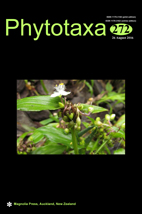Abstract
Paleolake Hadar was an expansive lake in the lower Awash Valley of Ethiopia’s Afar Depression that existed periodically through the Late Pliocene. The sedimentary deposits from this ancient lake (Hadar Formation) have broad importance because a significant number of hominin fossils have been recovered from the formation. Samples of the Hadar Formation lacustrine sequence were collected from sediment cores extracted as part of the Hominin Sites and Paleolakes Drilling Project (HSPDP). A paleoecological study of the HSPDP Northern Awash (Hadar Formation) material has unearthed three novel species of Bacillariophyta (diatoms) from diatomites that appear periodically in the cores. The Hadar Formation assemblage represents a newly revealed excerpt from the evolutionary history of freshwater diatoms in East Africa during the Piacenᴢian age (2.59–3.60 Ma). The HSPDP Northern Awash diatom species are compared to previously reported diatoms from Pliocene outcrops, modern and fossil core material from Lake Malawi, and extant species. Here we describe two new species of Aulacoseira and one of Lindavia. Taxonomic treatment of two diatom varieties reported by previous researchers as Melosira are transferred into Aulacoseira herein.

